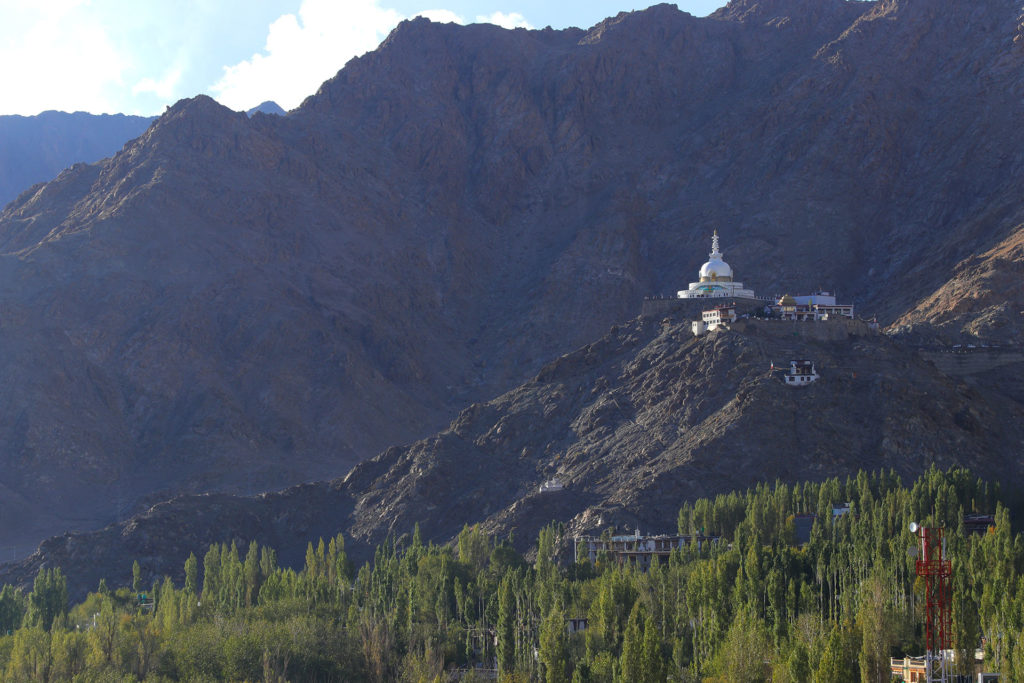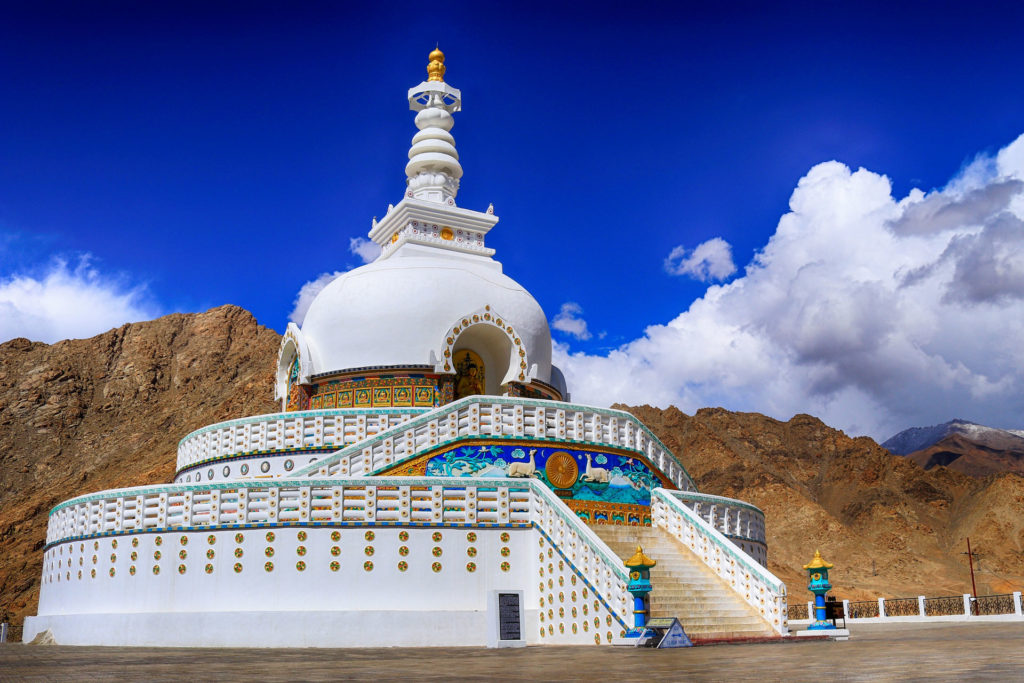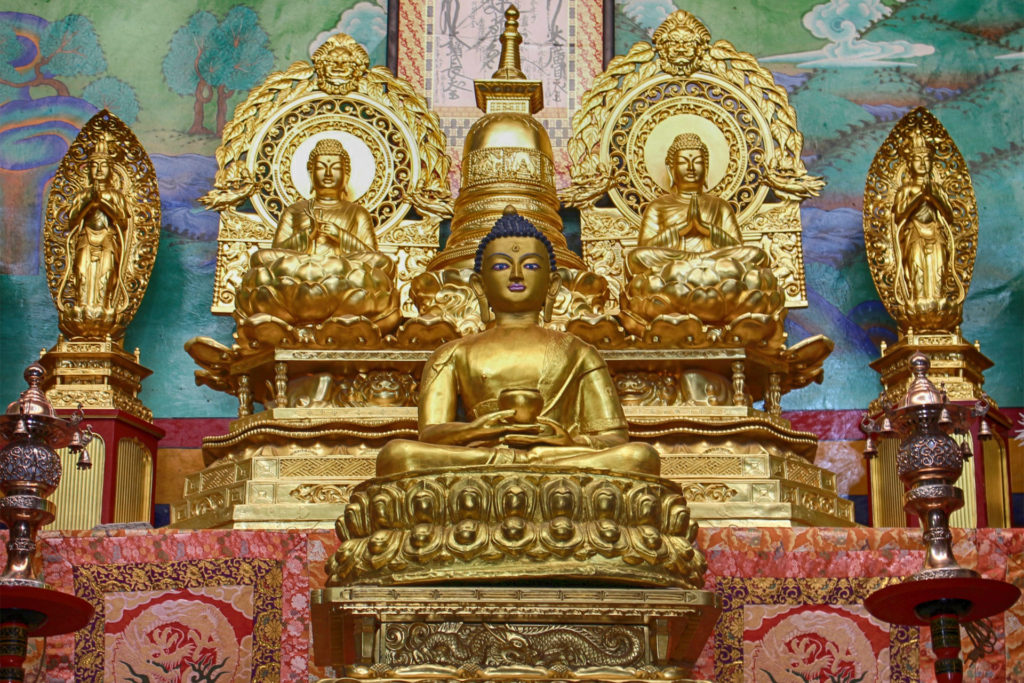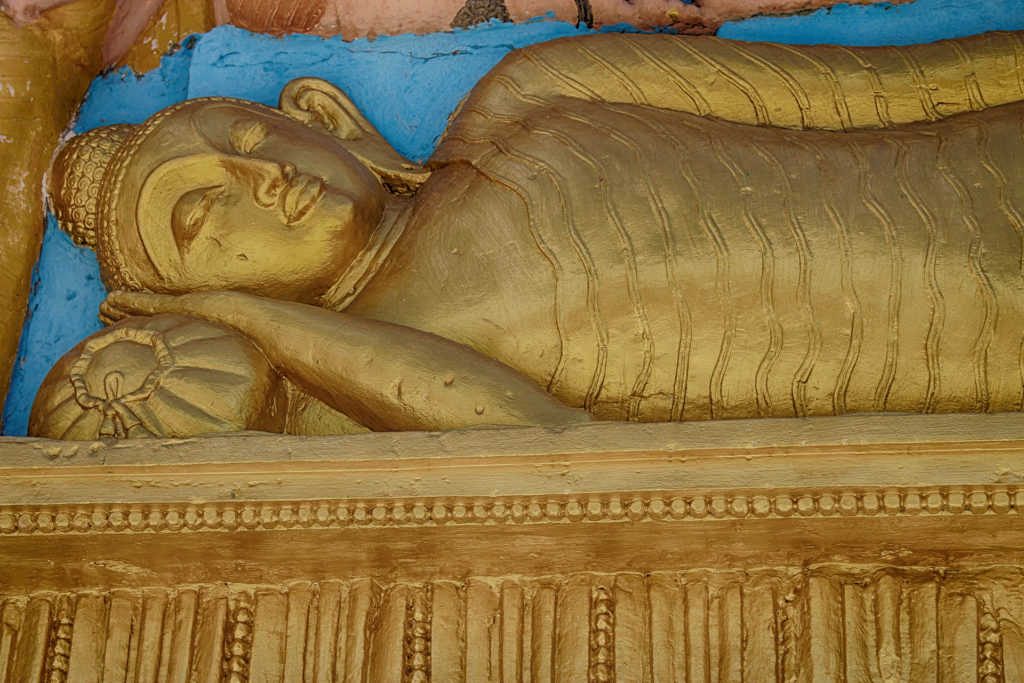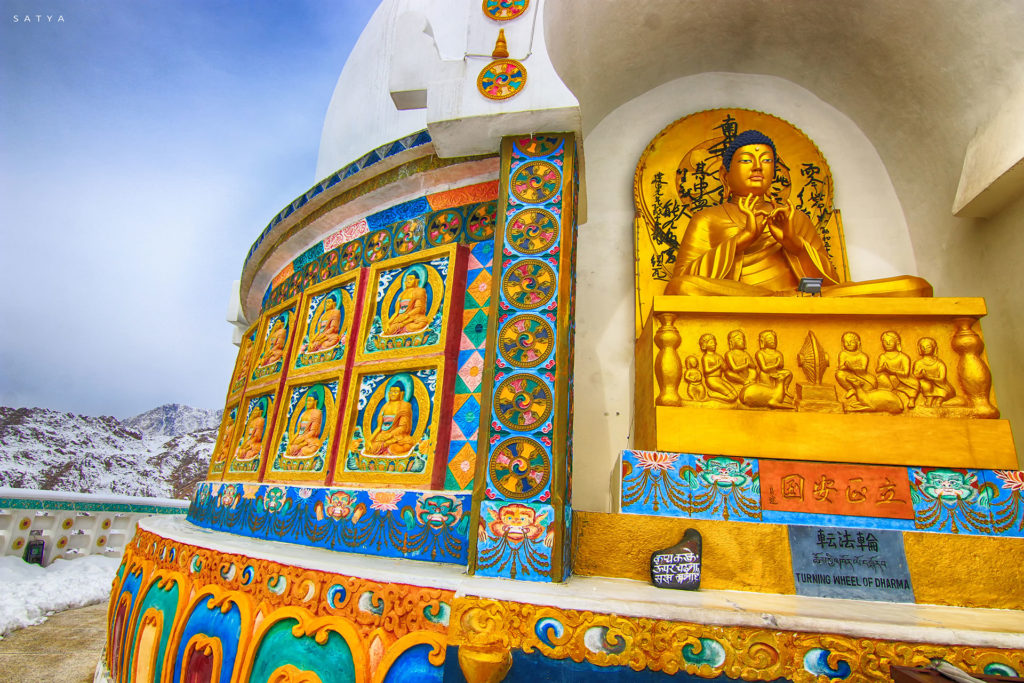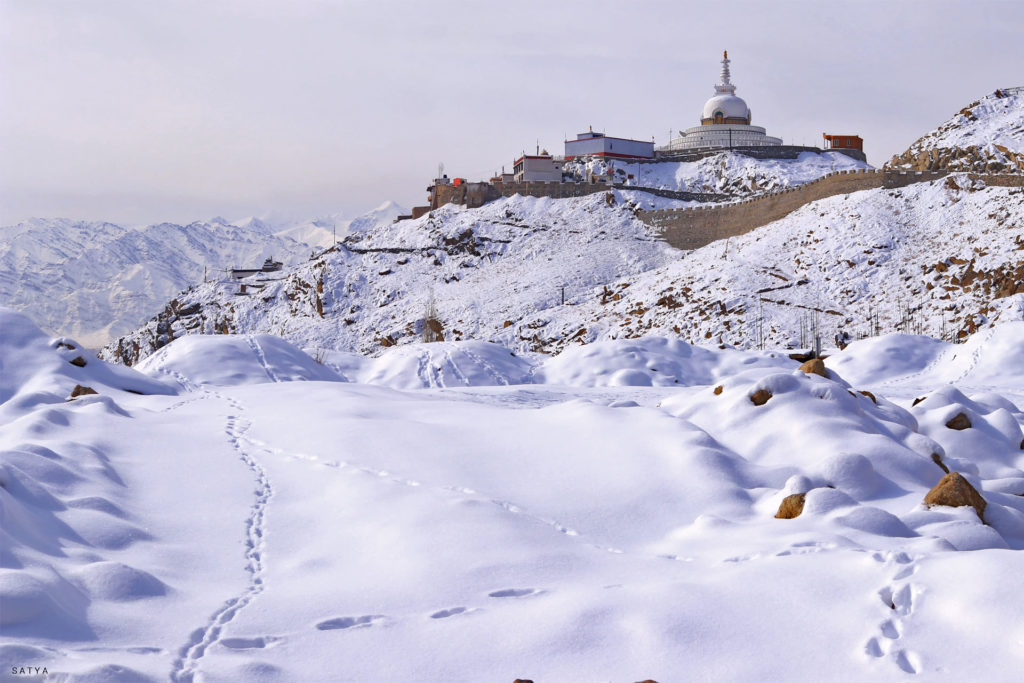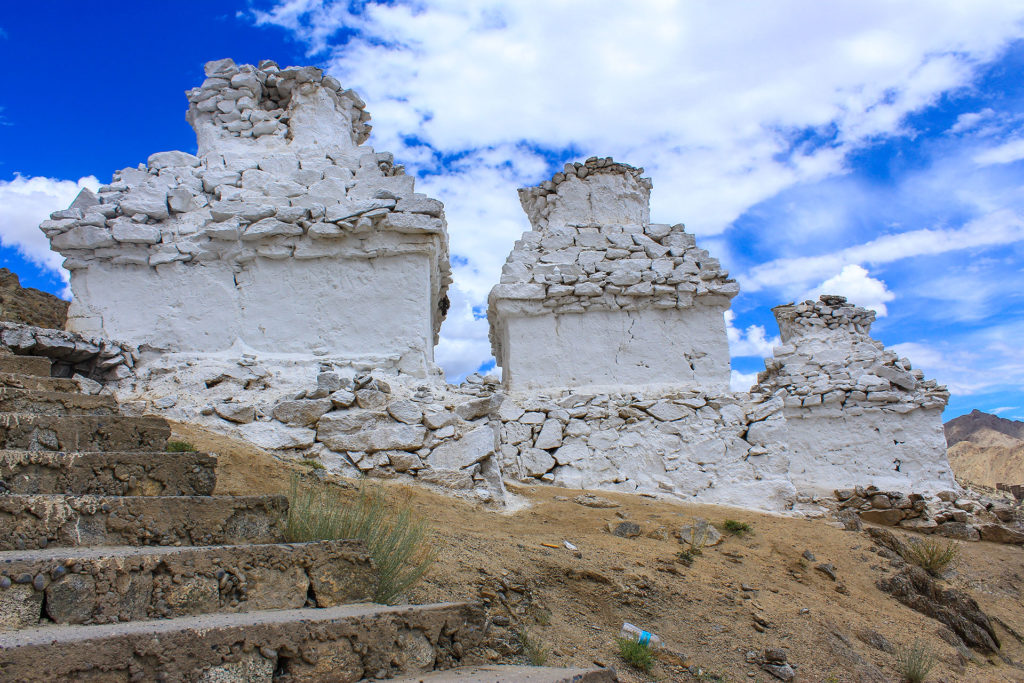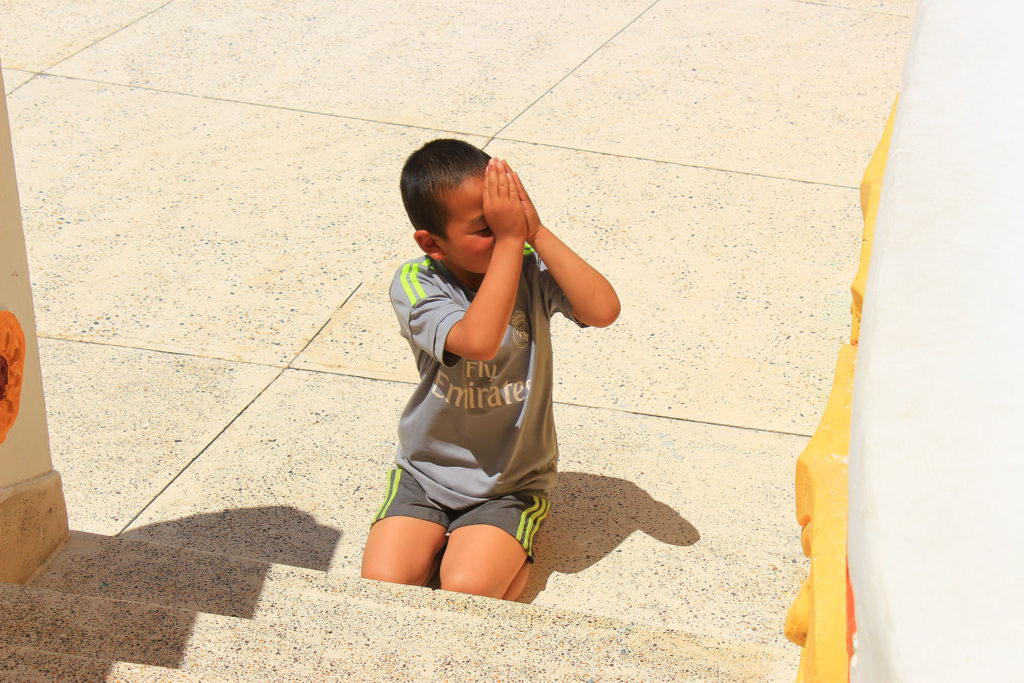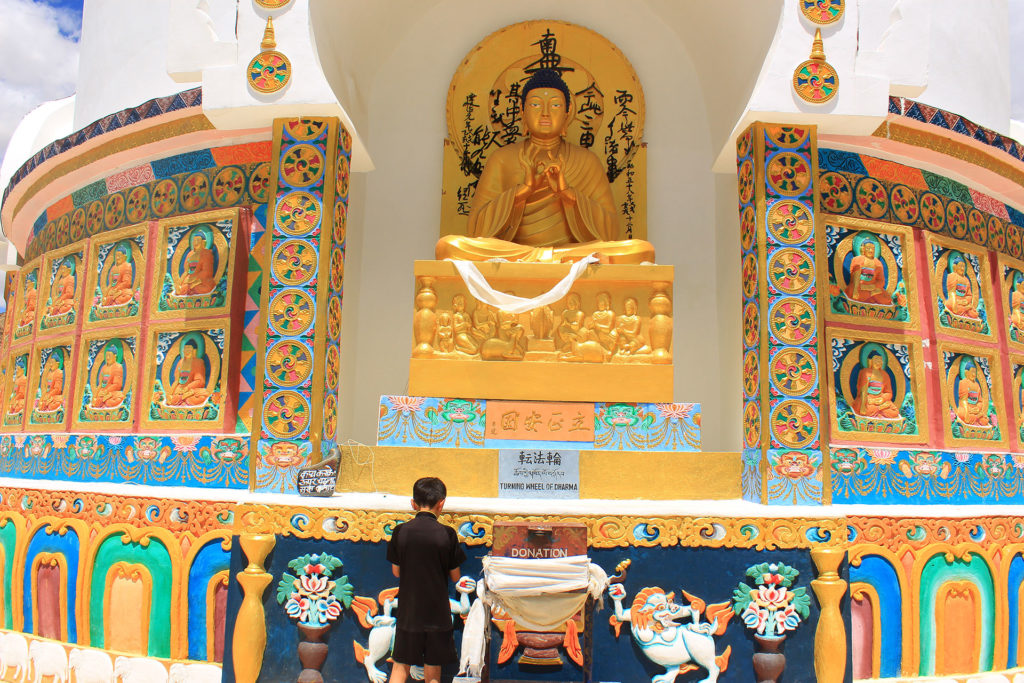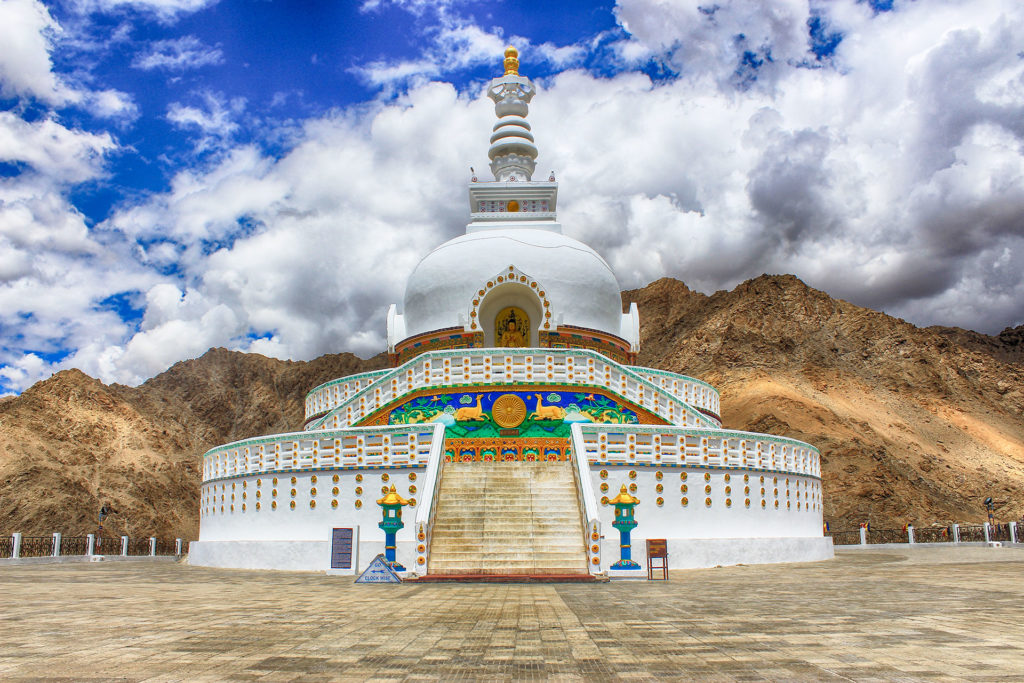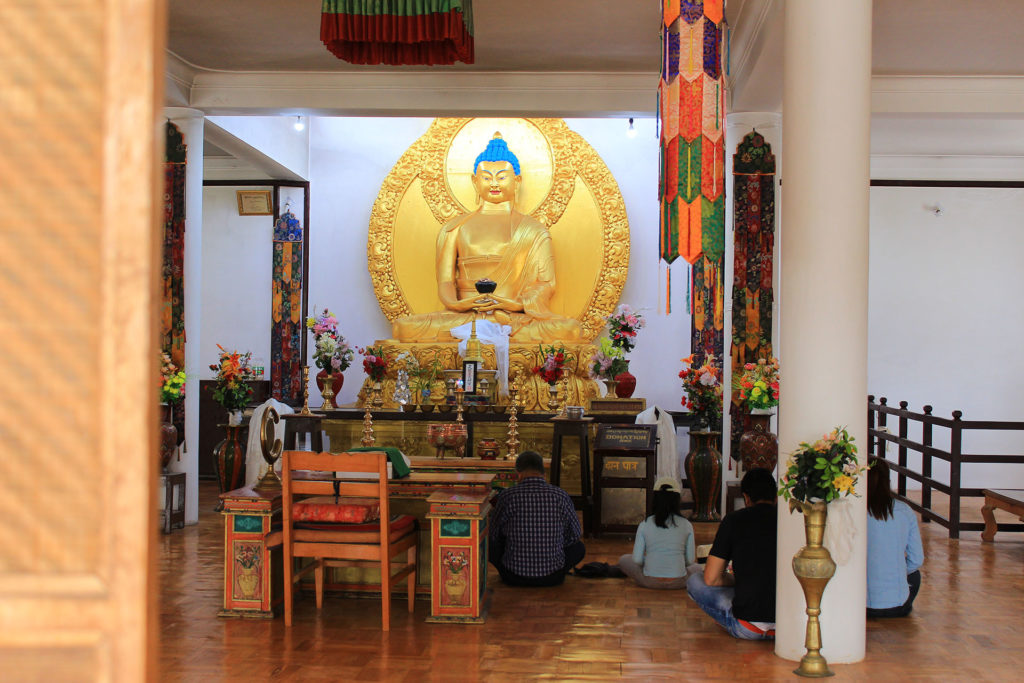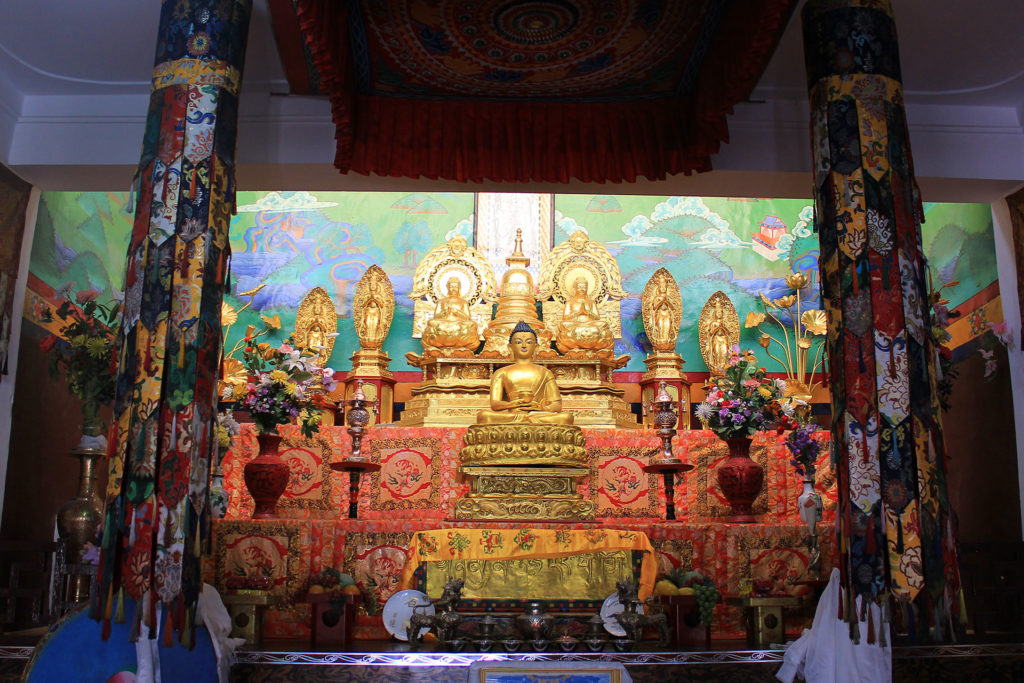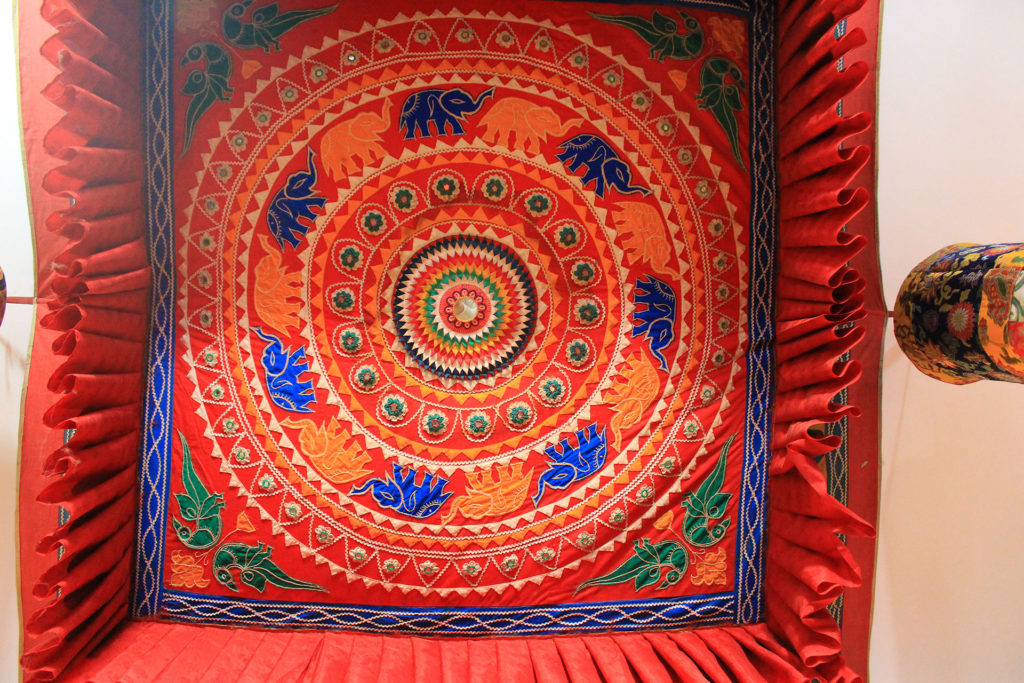About Shanti Stupa
One of the seven Buddhist Shanti Stupas across the world, the Shanti Stupa in Leh, Ladakh is an abode of peace and serenity. The purely white, dome shaped structure towers two storeys high above the surrounding landscape.
Set against the backdrop of the surrounding mountains of Ladakh, the Stupa commands excellent views of the scenic locale. Although the beautifully pristine architecture of the structure makes it a marvel during the daytime, the beauty of the Stupa is further compounded during the evening hours when it is lit up from the inside.
The Shanti Stupa reflects a unique architectural style, far different from the other Ladakhi Stupas. The first level of the Stupa houses a life-sized figure of Gautam Buddha, while the second level contains murals depicting three incidents in the Lord’s life- his birth, his death and attainment of ‘mahanirvana’, and his defeat of evil powers through meditation.
The Shanti Stupa also houses a meditation hall in its premises.The best time to visit the Shanti Stupa is during the hours of dusk and dawn. During this time, the fantastic play of natural light on the white Stupa walls and the surrounding snow-capped mountains offers a majestic view.
How to Reach Shanti Stupa
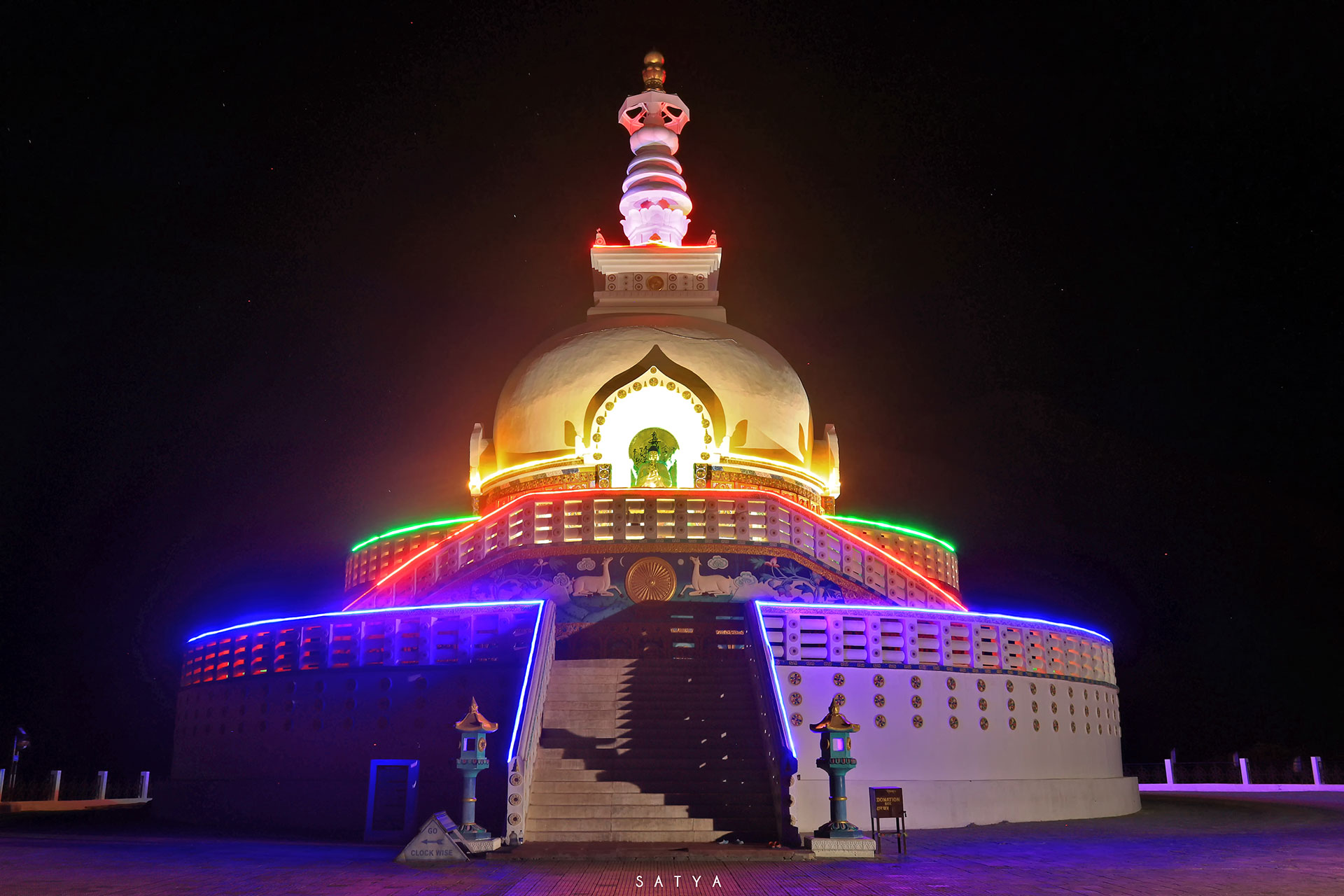
1. By Car: The best and easiest way to reach Shanti Stupa from Leh is to drive there. Shanti Stupa is located around 5 kilometers outside the city of Leh. The drive between the two places takes around 13 minutes.
2. On Foot: The alternate way to reach Shanti Stupa from Leh is to scale the road on foot. Although this method is more tiresome, you will be met with a number of scenic spots on the way. It would take around 45 minutes to trek to Shanti Stupa from Let via Changspa Road.
Best Time to Visit Shanti Stupa
The best time to visit Shanti Stupa would be during the months of summer, between April and June. During this time, the weather remains pleasant, and the snow from the winter months gets thawed. The chances of facing landslides during summer months is very little. The best time of the day to visit the Stupa, however, would be during the time of sunset or sunrise.
Other Essential Information About Shanti Stupa
History of Shanti Stupa
The original idea for the construction of Shanti Stupa was conceived by Nichidatsu Fujii, also known as Fuji Guruji, in the year 1914. The stupa was constructed under the joint efforts of Japanese and Tibetan monks, under the supervision of Bhikshu Gyomyo Nakamura and Kushok Bakula, the then Llama of Ladakh.
The project of the Shanti Stupa was a part of the ‘peace pagoda mission’, which sought to establish pagodas across the world. Funded by the Indira Government, the construction of the Stupa began in the year 1983. Construction was completed in 1984, and the Shanti Stupa was formally inaugurated in the year 1991, by the then Dalai Lama Tenzin Gyatso.
Structure of Shanti Stupa

The architectural style of the Shanti Stupa does not resemble the traditional Buddhist stupa structure, making it a unique attraction in Ladakh. The whitewashed structure rises to two storeys with a dome on the top. A series of 500 steps lead up to the stupa, and the staircase is flanked by Buddhist stone pyramids on each side.
The first level of the Stupa features an image of Lord Buddha turning the Dharmachakra wheel. The walls of the Shanti Stupa on the second level are carved with colourful relics that depict the significant events of Lord Buddha’s life. The dome sitting on the top of the stupa signifies the mound of dirt under which Lord Buddha was buried, and the railing that covers the dome resembles the fence that was built around the mound.
Traveler’s tips for visiting Shanti Stupa

1. Reaching the Shanti Stupa, located on top of the hill, requires a fair bit of trekking. Make sure you are in comfortable clothing and shoes.
2. Please take off your shoes before entering the Stupa.
3. Smoking within the Stupa complex is a finable offence.
4. As made evident through its name, the Shanti Stupa was built to be an abode of peace. Please maintain decorum while within the Stupa premises.
5. Do not litter the Stupa grounds or vandalize its walls.
6. The sight of the Stupa at night, with the lights kept on, is a splendid one and should not be missed.
7. Do not forget to carry your camera to the Shanti Stupa, as it commands an excellent scenic view of the surroundings.
8. As one has to scale a large number of steps to reach the top of the Stupa, it is important to stay hydrated during the climb.


